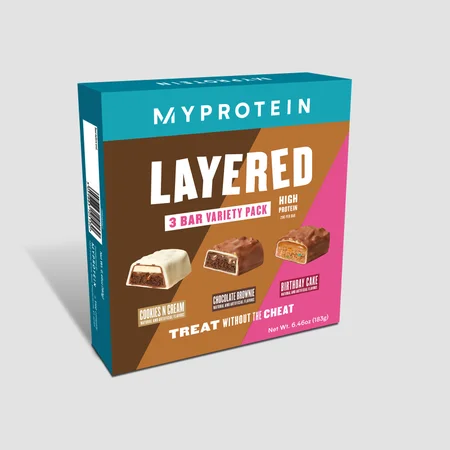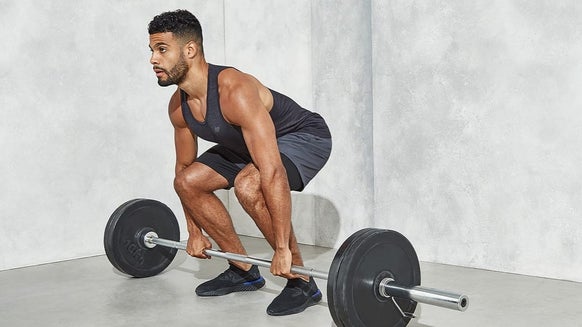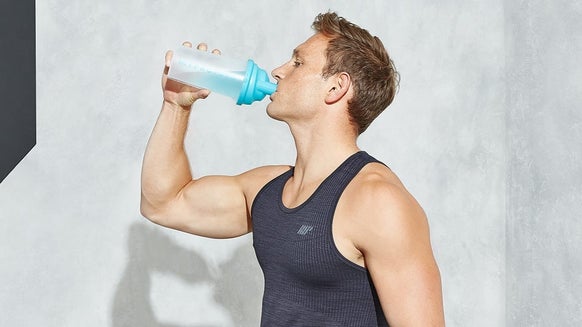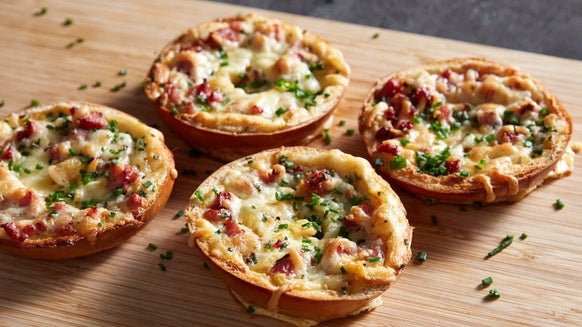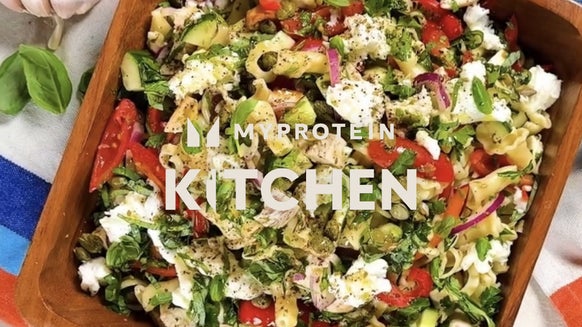Feel Full & Satisfied In A Calorie Deficit | Nutritionist Shares Best Foods

Behind every fad diet is a regular calorie deficit. No fancy weight loss secret, just fewer calories. Seems simple enough, right? Not really. Embarking on a weight loss journey is mentally and physically tough. And this essential component of weight loss is often the most difficult part.
Myprotein YouTube king, Richie Kirwan, is back with another video, this time explaining what foods to stock up on if you’re finding hunger getting in the way of maintaining a calorie deficit.
First and foremost, this advice is to help manage hunger pangs on a sustainable calorie deficit of a few hundred calories. We don’t advise drastically reducing calories.
What foods have the biggest effect on satiety?
Protein AKA “The golden boy of the satiety world”
This muscle-building macro nutrient is much more likely to keep you full than the other macronutrients, carbs and fat.
So much so that a long-term study showed that those on a high-protein diet, with about 30% of daily calories coming from protein, reduce the total amount of food they ate in a day, leading to long-term weight loss without the hunger.
But why is protein so special when it comes to reducing hunger?
Well, that’s where leptin comes in. Leptin is a hormone secreted by fat cells. When levels of leptin drop low, feelings of hunger can increase, which is why many people feel hungry when they’re losing weight.
Richie explains that it's been shown that a high-protein diet can increase leptin sensitivity, meaning lower levels don’t cause as much hunger.
High-protein diets have also been shown to increase the hormones PYY and GLP-1 — both help to keep us feeling fuller for longer.
On top of all this, Richie explains that protein also helps to lower levels of ghrelin, AKA the hunger hormone.
Low fat dairy products, legumes, eggs, fish, lean meats and protein powder have all been shown to have positive effects on keeping you feeling fuller for longer.
Dairy
Yes, dairy is a great source of protein, but Richie thought it deserved its own section on this list as studies have shown diets higher in dairy content have resulted in lower calorie consumption and less hunger.
Richie explains that while the high protein content of dairy may have something to do with this, dairy’s effects on satiety may also be down to its high calcium levels.
Studies have shown that low calcium diets could lead to a bigger appetite, particularly an appetite for fattier and more calorie-dense foods.
The calcium found in dairy is also highly bio-available. This means that the body absorbs it easily.
Low-fat cheeses, Greek yoghurt, quark, dairy milk.
Fiber
If you’ve seen the Nutritionist Explains video on fiber, you’ll know it has loads of benefits, more than just the obvious toilet-related one.
Fiber can have a huge effect on increasing satiety and aiding weight loss.
First off, this is because fiber slows down the absorption of food in the small intestine. Richie says this creates a steadier release of nutrients into the bloodstream, which can influence some of the hormones which help control appetite like PYY and GLP-1.
High fiber foods also help to reduce the energy density of foods, as they mostly pass through the body without providing energy.
The final reason fiber is key for satiety is because it can increase the volume of food in the stomach as it absorbs liquid.
“What are high-fiber foods?” you say. Plenty of oats, cereals, grains, legumes, fruits and veggies. Check out the article below for a full list.
Caffeine
Good news for all the coffee drinkers. Caffeine has been shown to reduce food intake when taken or drunk before a meal. Fill up that cup.
Coffee, pre-workout.
More Low-Energy Dense Foods
Energy-dense foods are those that have many calories per gram of food. The more calories per gram, the more energy dense the food is.
A key component of energy density in foods is water content. Foods with a higher water content will usually be less energy dense, while filling you up more. For example, 100g of spinach (very low energy density) delivers 30 calories for 100g. On the other hand, 100g of cookies have about 460 calories per 100g.
Try adding more veggies to your meal, have a side salad or start your meal with a soup. These low energy foods higher in fiber and water have been shown to reduce the amount people eat overall in a meal as they are much more filling.
And it also means you’ll be getting more fruits and veggies, which is always a good thing.
Fruits and veggies are your best bet for low-energy dense foods.
Solids vs Liquids
Smoothies are a brilliant and convenient way to get your micronutrients in quick. But Richie points out that studies have shown that when the exact same meal has been consumed in solid and liquid form, those who consumed the solid form generally experienced more of a reduced appetite.
This could be because the body isn’t great at realizing that you’re consuming calories when drinking them. So it may be best to avoid drinking your calories.
Avoid processed sweet treats
Unfortunately, most biscuits, buns, cakes and other sweet treats are made with processed ingredients like refined flour and sugar. This makes them super low in fiber while also being energy dense. In other words, they’re delicious and give you loads of calories without filling you up, making you want more.
Richie says these foods are fine in moderation, but they’re very easy to overeat.
One way to make sure you’re able to eat the foods you enjoy (but ones that might be a little more processed) is to add foods to make it more of a well-rounded meal that’ll keep you full.
For example, if you want a pizza, have some pizza, but add a side salad with plenty of fiber to keep you feeling satisfied.
Or have those biscuits, but put them on top of some Greek yoghurt for protein, and add some berries for fiber.
Try adding more whole foods into your diet as a sweet treat. Things like dates, dried fruits, fruit salads etc.
Take home message
Losing weight is undoubtedly difficult for many, but there are ways to boost your satisfaction factor and still enjoy the foods you love.
Stock your fridge with your favorite veggies and some easy high-protein snacks. And if cravings strike, add some high-fiber, high-protein foods to create a well-rounded, healthy meal that satisfies both cravings and macros.
READ THESE NEXT:
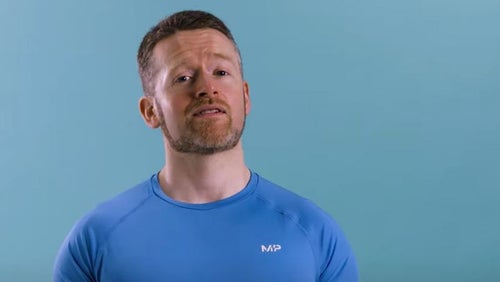
Bulking Diet Explained By Nutritionist
Richie is back to explain bulking diets.

Increasing Your Metabolic Rate | Nutritionist Explains
Richie breaks down all the acronyms of your metabolism.
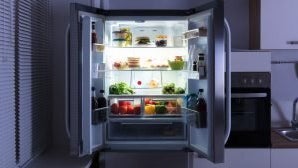
“Why Do I Eat When I’m Bored?” | Nutritionist Answers This Age-Old Question
And how to only eat when you're *really* hungry.

